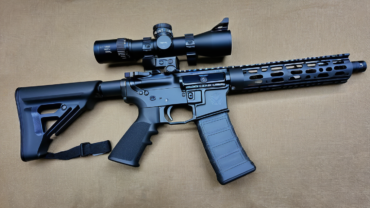How to Afford Prepping: A Comprehensive Guide

In today’s unpredictable world, prepping is no longer just for the fringe survivalist. It has become a mainstream movement for those who wish to be prepared for emergencies and ensure their family’s safety. However, prepping can seem like a daunting financial commitment. We understand the challenges, and in this guide, we will provide detailed strategies on how to afford prepping without breaking the bank.
Understanding the Importance of Budget-Friendly Prepping
Prepping is about being prepared for any situation, whether it’s a natural disaster, economic downturn, or other emergencies. While some believe that prepping requires a significant financial investment, it’s possible to prepare effectively on a budget. By prioritizing essential items and making strategic choices, anyone can build a robust emergency preparedness plan.
Start with a Comprehensive Plan
The first step in affordable prepping is to create a detailed plan. This plan should outline potential emergencies, prioritize essential needs, and set a realistic budget. Key elements to include in your prepping plan are:
- Risk Assessment: Identify the most likely emergencies in your area.
- Resource Inventory: List what you already have.
- Essential Needs: Focus on water, food, shelter, and medical supplies.
- Budget Allocation: Determine how much you can spend monthly on prepping.
Prioritize Water and Food Storage
Water Storage Solutions
Water is the most critical resource. Aim for at least one gallon of water per person per day for a minimum of two weeks. To make this affordable:
- Reuse Containers: Clean and repurpose plastic bottles and containers.
- Bulk Purchase: Buy water in bulk during sales.
- Water Filtration: Invest in a quality water filter. This is a cost-effective long-term solution.
Affordable Food Storage
Building a food storage can be done economically by focusing on non-perishable items and buying in bulk.
- Staple Foods: Rice, beans, pasta, and canned vegetables are inexpensive and have long shelf lives.
- Sales and Coupons: Take advantage of sales and use coupons to buy in bulk.
- Home Canning: Preserve food from your garden or buy seasonal produce and can it yourself.
Build a DIY Emergency Kit
Creating a DIY emergency kit can save you significant money compared to purchasing pre-made kits. Here’s a list of essential items you can gather or make yourself:
- First Aid Supplies: Buy basic supplies in bulk and assemble your own first aid kit.
- Shelter and Warmth: Use old blankets, tarps, and heavy-duty trash bags.
- Tools: Gather multi-tools, duct tape, and other versatile items from around your home.
- Lighting: Invest in affordable solar-powered or hand-crank flashlights.
Thrifty Gear and Equipment
Second-Hand Shopping
Thrift stores, garage sales, and online marketplaces like eBay and Craigslist are gold mines for prepping gear. Look for:
- Camping Gear: Tents, sleeping bags, and portable stoves.
- Tools: Hand tools, fishing gear, and gardening supplies.
- Clothing: Durable outdoor clothing and footwear.
DIY and Repurposing
Many prepping items can be DIY projects or repurposed from household items:
- Fire Starters: Use dryer lint and old candle wax.
- Survival Kits: Make your own kits using old backpacks and containers.
- Home Repairs: Use existing materials for minor home fortifications.
Grow Your Own Food
Starting a garden is a sustainable and cost-effective way to ensure a continuous food supply. Even with limited space, you can grow essential items.
- Container Gardening: Use pots and containers for vegetables and herbs.
- Community Gardens: Participate in local community gardens for additional space.
- Seed Saving: Save seeds from your produce to plant next season.
Learn Essential Skills
Skills can often be more valuable than gear. Invest time in learning and practicing essential survival skills such as:
- First Aid and CPR: Take free or low-cost classes from local organizations.
- Gardening and Canning: Many online resources and community workshops are available.
- Hunting and Fishing: Learn through local classes or experienced friends.
Financial Tips for Preppers
Budgeting and Saving
- Track Spending: Keep a detailed record of your expenses and identify areas to cut back.
- Emergency Fund: Set aside a small amount each month specifically for prepping.
- Group Buys: Team up with friends or family to buy supplies in bulk at discounted rates.
Bartering and Trading
In a prepping community, bartering can be a valuable practice. Exchange skills, goods, and services to save money and build a supportive network.
Join Prepper Communities
Joining local or online prepper communities can provide valuable insights, resources, and support. These communities often share tips on where to find affordable supplies and how to make the most of limited resources.
Conclusion
Affordable prepping is about being strategic, resourceful, and proactive. By focusing on essentials, utilizing second-hand resources, and developing key skills, you can build a robust preparedness plan without significant financial strain. Remember, the goal is to ensure the safety and well-being of your family in any situation. With careful planning and smart choices, prepping on a budget is not only feasible but also highly effective.









